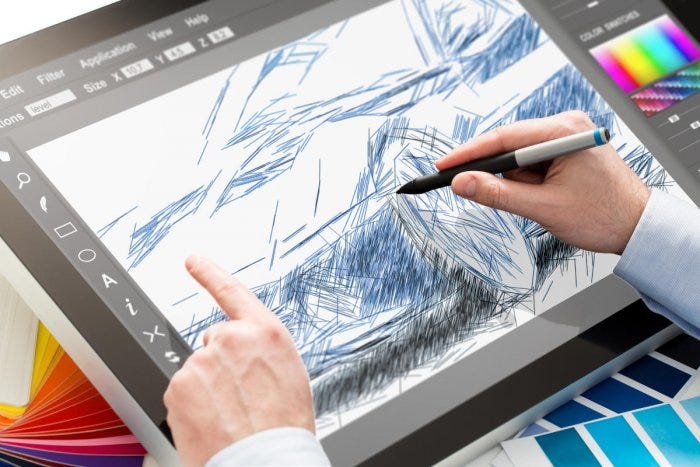Traditional art forms like painting, music, and dance are being combined with modern technology more often. This merges the classic arts with helpful tech tools to preserve and share them.
Starting a business to earn income using tech fused with cultural arts provides fulfilling self-employment. It allows unemployed people with a passion for the arts to make steady money.
Getting loans for people on benefits with reasonable rates can supply startup funds for media equipment like cameras, music tools, computers, software, etc.
Digital Revival of Old Arts
Classic art forms are being restored and made new again with modern tech. Digital tools give creative ways to save ageing paintings, statues and cultural history for future years. Technology also influences how artists make and show old-style artworks.
Fixing Classic Artworks
Experts use high-tech photos to capture small details of Egyptian wall art, old Italian paintings or Aboriginal rock drawings. Software erases cracks and missing sections, fixing damage from time. The digital versions show their original beauty. Museums also 3D print precise plastic copies of Greek statues with lost limbs and parts rebuilt. This saves artefacts for ages to come.
Artists Mixing Old and New
Many creative folks now mix time-honoured methods with new tech twists. A Japanese painter uses thick sumi-e inks the old way on rice paper. She then projects animated versions on screens behind for modern flair.
This energises her ancient style passed down through history. A Mexican photographer adds colourful Day of Dead designs with graphic apps to accent his backyard portraits on antique film.
Expanding Tools and Ways
Tech gives more options to those keeping conventional art practices alive. Digital drawing tools mimic the feel of charcoal, pen or brush with endless improvements. 3D modelling helps visualise pottery shapes.
Augmented reality apps add digital sights and data to real exhibits. These grow art methods rather than replace them fully at once. Mixed approaches respectfully supplement rather than take over the old staples.
If you lack funds and need money, then you may quickly get 12-month loans at low traits from direct lenders! Compare multiple direct lenders online for affordable financing. Use the loan wisely to build skills and a unique micro business.
Reaching More Audiences
The web, social sites and immersive shows let old-style art go beyond museums to engage more people. Artists share behind-the-scenes videos on YouTube inviting viewers to try rare instruments.
Cultural centres exhibit digitally-printed tapestries on Instagram for global eyes. Digital archives offer thousands of classic works for free public access with their backstories to create connections. Efforts especially aim to involve younger groups less familiar with fine arts to keep these legacies alive into the future.
Mixing Old Arts and New Tech
More traditional art forms are using modern tools these days. Combining classic creative styles with helpful tech is becoming popular. This lets age-old art thrive while reaching wider audiences.
Preserve History
Computer programs also recreate artefacts, architectural models, and items of indigenous cultures. Animation and 3D printing help mimic statues or pottery styles passed down through generations. This technology preserves cultural history.
Blended Approaches
Blending tech tools with human art forms in respectful ways spreads traditional methods creatively. But tech should promote the roots, not overcome them fully. For instance, virtual reality could let global viewers take part in heritage music and regional dance demos. This spotlights cultural origins at their source.
Loans Can Assist Income
Blending tech fused with traditional arts also allows self-employment. Passionate unemployed people can build businesses recording ethnic music to sell online or photographing dances to use in artwork. Reasonable small business 6-month loans supply critical gear like cameras, editing programs, music tools, etc. Use funds ethically to learn skills promoting cultural arts uniquely.
The Future of Traditional Arts in a Digital World
Have you considered how classic creative styles like ancestral songs or folk paintings can remain meaningful in modern tech?
Useful Updates
Little useful tweaks show respect while making heritage fresh for new eyes, like bands performing traditional instruments while screening nature videos in the background. Or museums are putting folk legends over artefacts with voice-over tales. This reminds me that people made them first.
Sharing Origins
Digital libraries can safely keep monumental global arts archives to protect fragile forms. But public access to reference maps on artworks’ familial roots also breeds new connections. Balance of old and new prevents fading into just leftover shapes.
Helping Old Arts with New Tools
New tools can help old art in ways not possible before. These tools can make the arts reach more people, save them for later, and let them change.
More Interest
Tools let more see and like old art. Rare songs or dances can be on the web. Young people can see them there. New and old artists can mix styles with tech help. This makes new art people like. Videos spread fast.
Keeping Art Alive
Many old arts fade as masters age and pass on. Tech can keep records of how they worked. Future artists can learn from them. Tools also allow far-off students to still learn from masters. Songs, dances and styles stay alive.
Letting Art Grow
While tech keeps the core of old arts, it also lets them grow. Musicians use digital tools to try new sounds but keep writing songs the classic way. Artists use new views and feelings to push limits. Tech gives new ideas.
Power to Create
Tech gives the power to make new things. Tools help craft old styles into new forms. Songs and dances can change yet feel the same. Folk art and classical music stay alive this way.
Reaching More People
Online tools spread art far and fast. Villages can share dances globally. Music gains fans worldwide. Traditional arts can earn and inspire through tech’s reach.
So, while tech may hurt some old art, it also gives hope. With care, tech provides ways for these arts to stay and evolve. It keeps the roots while growing the branches to shade more people.
Conclusion
Cultural history informs tech as much as the reverse, ideally. Instead of replacing old arts fast, pioneers will phase them into cutting-edge works reaching across ages. But the human priorities, tales, and symbols key to every old art should stay prime no matter what new add-ons later on. Much meaning has already been lost in our fast era. Compromises will likely balance preservation with tech spread. Still, origins should guide vision, so essence holds in some way.






